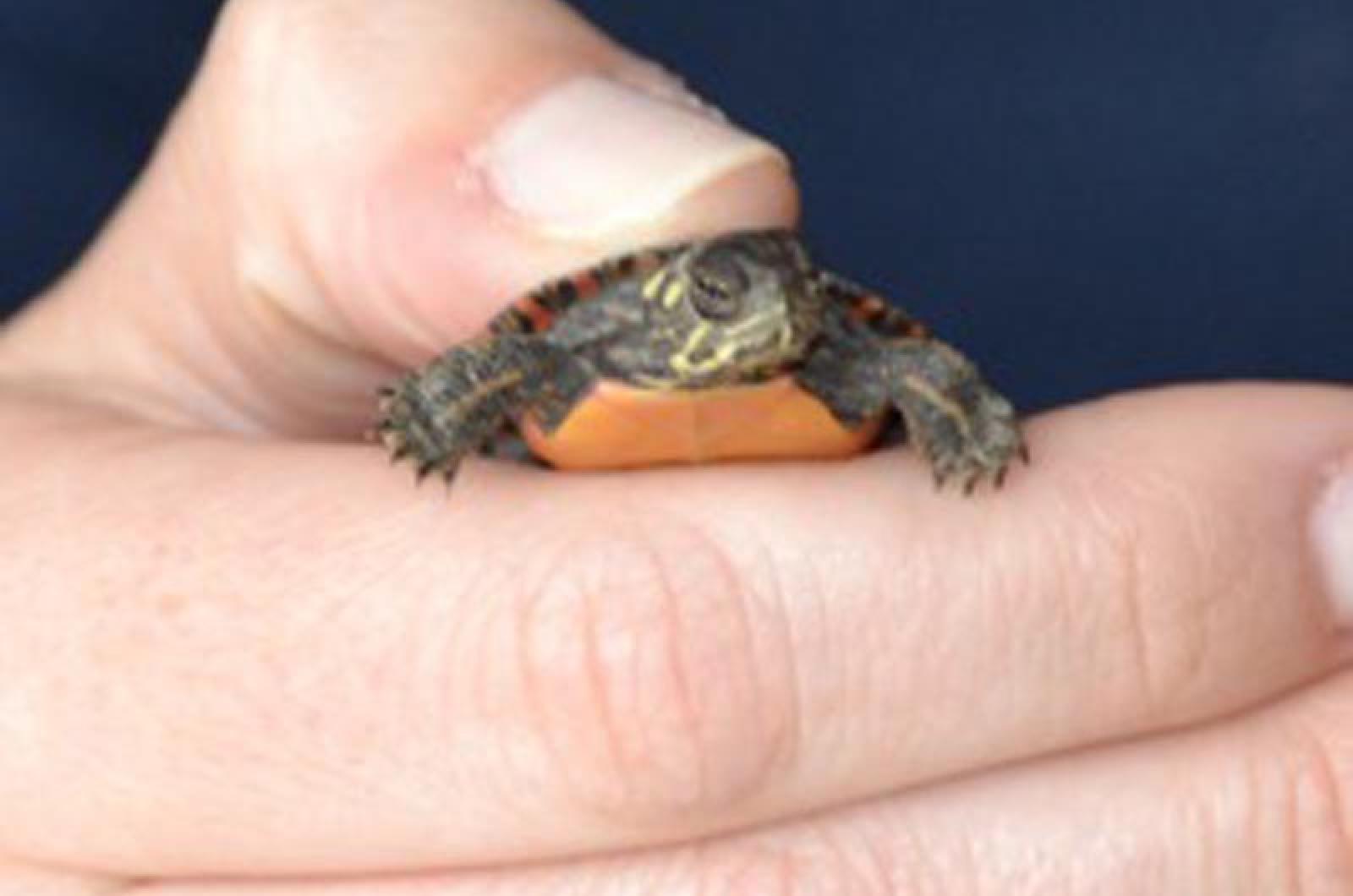Happy Birthday Baby!
Making it to its first birthday is quite an accomplishment for a painted turtle. At one year old, painted turtles are about the size of a quarter and have been very rich in luck (if not change).
These survivors beat the odds. More than 90 per cent of turtle nests are lost to predators, such as raccoons and skunks, which gobble up turtle eggs like they were candy.
For the 10 per cent of painted turtles that remain, the enduring hatchling’s first year is a quiet one.
It wasn’t even a glint in its mother’s eye, when an aquatic female adult finds herself swimming seductively with a male turtle. Being smaller than his mate, the male cannot overpower the female. Instead, he swims after her and strokes her face and neck to show his interest. Returning the gesture by stroking the male’s forelimbs tells him she is ready. Upon agreement, they sink to the bottom of the pond for their low-down lovemaking.
The embryos created immediately stop development inside the body of the female turtle. Then the female leaves the pond to seek an appropriate place to lay her eggs. Typically she won’t go far from her natal home, choosing a laying location within half a mile. Her location preference is one that provides a sunny orientation.
Once a suitable nesting site is found, the mom-to-be will dig a four-inch deep and two-inch wide hole and lay approximately four to eight one-inch eggs. Clutch numbers can vary widely, though, with lows of two and highs of 20 eggs reported. While digging, she will urinate to loosen up the soil and aid in her excavating.
Laying and burying her eggs is her next priority. Once the nest is covered up, it is very difficult to find, although predators (but generally not humans) can often locate it due to the urine smell left behind.
Growth of the embryos resumes in that buried nest, incubated by the warmth of the summer sun and kept moist by the falling rains. Temperature determines the sex of the hatchlings; extremes, both hot and cold, produce female turtles, while moderate temperatures create males. Hatching of tiny painted turtles occurs in the fall. However, most of those hatchlings stay put in their safe and cozy below-ground nest throughout even the harshest winter.
Painted turtle hatchlings are able to overwinter in even freezing temperatures. Their bodies become super-cooled, having no discernable heartbeat, no blood flow and no muscle movement while in their winter wonderland. And yet, they will reenergize and emerge in the spring, ready for whatever life brings them next. This explains the tiny turtles seen this early in the season.
Overwintering in the ground is a one-time occurrence because painted turtles must travel to their pond and live out their long life in an aquatic setting. Subsequent winters are spent at the bottom of their pond. Painted turtles can live more than 40 years, though they won’t begin their reproductive years until they are seven to nine years old for males and 11 to 16 years for females.
Thus, these turtles will have lots of time to swim and crawl through their life’s aquatic adventure. The more adventurous will, of course, as only these turtles can, paint the town (and their pond) red!
Suzan Bellincampi is director of the Felix Neck Wildlife Sanctuary in Edgartown.







Comments (1)
Comments
Comment policy »